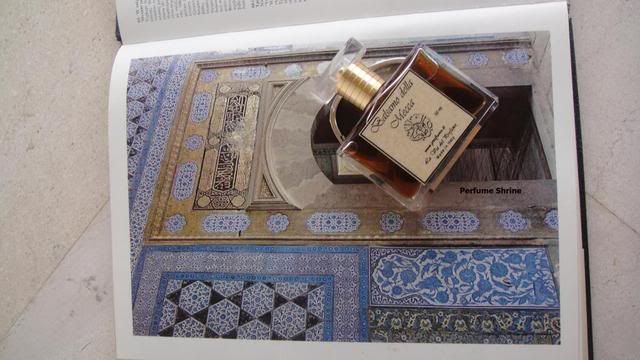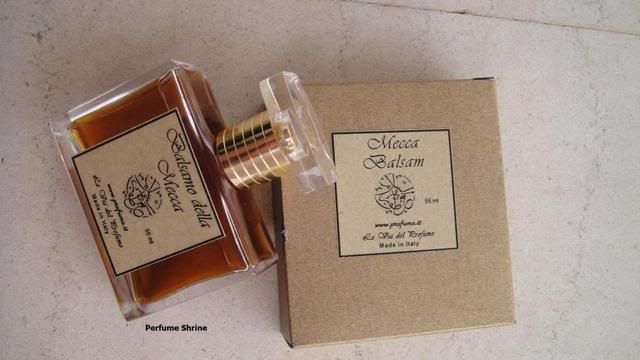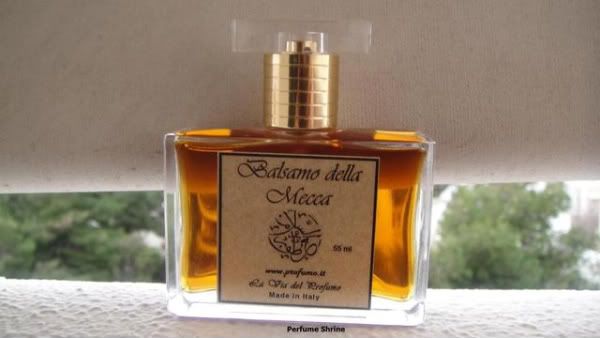Some of the most fascinating scopes of the smell-study do not revolve around commercial fragrances at all. One area which provides us with phenomenal and astounding observations on the role of smell is history & archeology; especially when it has to do with legendary figures.
Dr Philippe Charlier, a paleopathologist (that is, a medical expert on the ailments of prehistoric times) and medicine historian at Lille II and Paris VII universities as well as a forensic scientist at the Raymond Poincaré Hospital in Paris, has come up with an astonishing revelation: That
the last remains of Jeanne D'Arc or Joan of Arc, preserved by the church as holy relics,
were a hoax: in fact the lot consisted of the remnants of an Egyptian mummy!

The discovery
dates to April 2007 actually, but the more impressive point is the way in which
he came up to this conclusion: through smell. The scent of the remains and the essences used to embalm the dead in ancient times gave priceless clues.
A group of 20 researchers examined the reputed Joan of Arc remains at Tours (Indre-et-Loire) for months: There was a piece of a human rib ~ blackened on the surface as if charred, minor bone remnants, wood & solid matter and some linen tissue measuring 15cm. The lot surfaced in 1867 in a jar in the attic of a Paris pharmacy. They were labelled "Remains found under the stake of Joan of Arc, virgin of Orleans" and were later officially recognized by the Vatican as being authentic. What put the team of researchers into the right track nevertheless were some smart observations.
First, the remains did not appear burnt but rather embalmed. Microscopic examination revealed several pine pollen stigmata (of a type not inherent in Normandy) which are a common occurence in the resin used for embalming in Egypt. The linen tissue was chronologised via the Carbon-14 method (a destructive method, said in passing, hence its use only on the piece of linen) to the Upper Egyptian epoch of 3rd to 6th centuries BC.

Furthermore, one of the bones was actually a cat's femur. Now cats were sacrified in the pyre alongside witches during the times of witch-hunting, but they were also embalmed alongside their owners during the Egyptian times! Another clue was the labeling itself: it recalled the style and syntax patterns of the 19th century, not the 15th century when Jeanne's remains would have been amassed and preserved after her cremation at Rouen in 1431. This coincided historically with the rediscovery of the myth of Joan of Arc which happened around 1867; up till that point she had been neither canonised nor were she acknoledged as a national emblem. The supposed discovery of her remains gave substance to the legend in an era of fervent French nationalism.
The objects could have been amassed easily indeed within the inventory of a Parisian doctor or apothecary of the 1860s. Powdered mummies were routinely prescribed ever since the Middle-Ages for all sort of ailments, from stomach aches to pain due to menstruation. Even the king François 1er was known to be carrying a bit of the powder in a locket around his neck for emergencies. The cat's femur could have been a fraud on its own: an apothecary trying to pass an embalmed cat as part of an Egyptian human mummy worth its weight in gold!
Therefore, the seed of the idea that the lot was actually a major historical hoax was firmly planted. It remained to be amply justified and proven.
To that end
a novel approach was opted for: "We wanted a professional nose to confirm the smell [of the relics] and identify what molecules [the smells] might be," Charlier said. Fragrance experts Sylvaine Delacourte, of Guerlain, and Jean-Michel Duriez, of Jean Patou, were called for, seperately*, to determine by smell what were the essences used and to compare and contrast with known substances at the laboratory of Dr Philippe Charlier.
According to Sylvaine Delacourte, who publicized this magnificent adventure
on her blog in French, the adventure was originally aimed for something completely different: Smelling the embalmed hearts of French kings at the Basilique de Saint Denis so as to determine the essences used, but when permission was not granted for that, the mission turned to other relics to which access had been granted: Those of Jeanne D'Arc! According to mme Delacourte, the specimens smelled for cross-comparing purposes for this mission were: *Ashes of Agnès Sorel (smelling of vanilla) *hair lock from a necropolis at Ica in Peru (which smelled of licorice!) *hair lock from a woman of a Beauvais convent *remains of an Egyptian mummy and *the supposed remains of Jeanne D’Arc/Joan of Arc.

Both Sylvaine and Duriez identified soft, balsamic odours emitting from the remains. Specifically there was clearly identifiable
vanilla and burnt plaster (made of sulfate of calcium), both of which coincided with the hypothesis of Dr.Charlier. Vanillin (a constituent of vanilla) is a common smell produced by corpse decomposition ~hence the "sweet smell of death"!~ and is routinely witnessed in Egyptian mummies, but it is never a product occuring in victims of pyres. The burnt plaster on the other hand seems to have been a deliberate "planting": Joan of Arc was reputed to have been cremated tied not to a piece of wood, as was the custom, but on a piece of plaster so as to prolong the agony...But it was the vanilla that didn't fit!
Anastasia Tsaliki, an expert in ancient diseases at Britain's University of Durham, said she was impressed with Charlier's detective work: "It is a fascinating project and shows how forensic methods can be combined with tools used in archaeometry [the study of archaeological materials] and archaeobotany [the study of ancient plants] and osteology [the study of bones]," she told the journal
Nature. [
source] And archeo-sniffing I might add. Sometimes smell really is a forgotten sense!
What is even more promising is that mme Delacourte was invited on another such expedition, this time involving headspace technology, which she promises to recount to us soon. Can't reveal more, but it is sure to amaze just as this one!
*According to the article on Future Sciences recounting the results, while according to Sylvaine herself she had the idea of inviting Duriez because they're friends and she trusts his expertise.Part of the info comes from Jean Etienne's article, appearing on Future Sciences. Translation by Elena Vosnaki @ Perfume Shrine.
Painting Joan of Arc in Prayer by John Everett Millet. Jean d'Arc remains via Futura Sciences. Egyptian mummy via the Smithsonian blogs
.jpg) Initial previews want the tuberose version to be really soft, with a piquant opening and a beautiful progression which doesn't remind one too much of Infusion d'Iris, in the manner that Infusion de Fleurs d'Oranger did (one of the moot points as per many consumers). We will update with reviews of the vetiver one as available.
Initial previews want the tuberose version to be really soft, with a piquant opening and a beautiful progression which doesn't remind one too much of Infusion d'Iris, in the manner that Infusion de Fleurs d'Oranger did (one of the moot points as per many consumers). We will update with reviews of the vetiver one as available..jpg)





.jpg)







